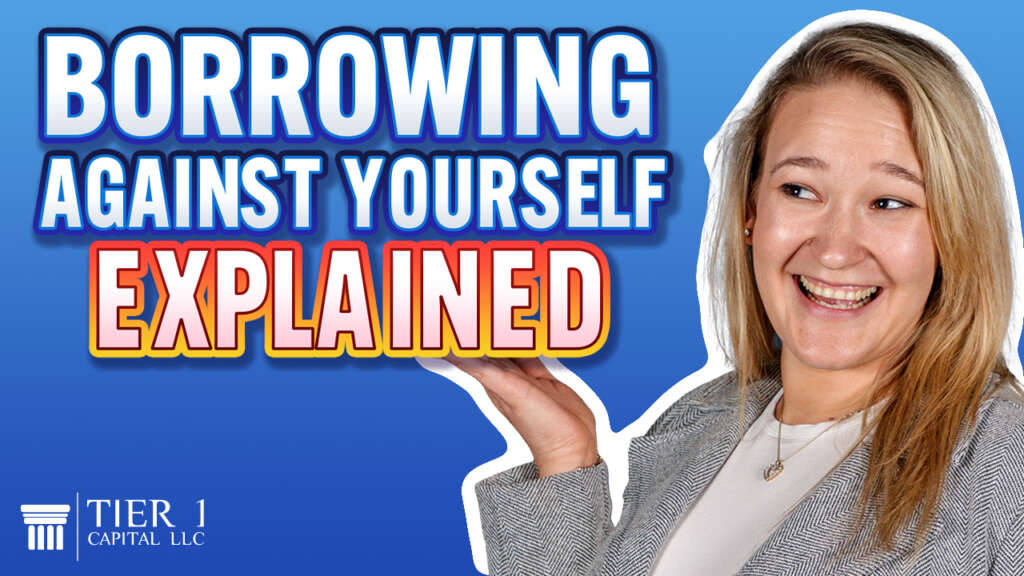
You hear us talk all the time about using life insurance cash values to finance the things of life. Recently, we had a client who used her life insurance policy values in order to finance a home purchase.
Whole life insurance policies have something contractually guaranteed called a policy loan provision. And if you’ve been following our strategy for any amount of time, you know that we often recommend that our clients borrow against the equity or the cash value of their life insurance policies to take care of the things of life, whether it’s an emergency or an opportunity.
Recently, this client called us and said, “Hey, we have an opportunity to purchase some real estate. It’s an insider deal, but I need to close in 21 days. I don’t believe I can go and borrow from a bank and close within 21 days.” Because it was an inside deal, a sale from a family member, they didn’t necessarily need the inspection report because they knew the history of the property. Consequently, the client asked, how much do we have in the policies and how much can we borrow?
Well, fortunately, there was enough equity in the policies that they could borrow against the cash value and make the closing within the 21-day period.
You see, this is a huge benefit and future of whole life insurance policies. You have a contractual guarantee to access the policy loans via the loan provision. And what this means is that it’s an unstructured loan from the insurance company to the policy owner. The policy owner is able to set up their own loan repayment terms.
The insurance company does charge an interest rate that goes to the insurance company, The client gets to decide how much and how often they make loan repayments to that policy loan.
And you see, having access to money when you need it is a huge benefit. And it’s a benefit that you get with cash value life insurance. Most financial frustrations come from not having access to money when you really want or need something. And the fact of the matter is when you have access to cash, opportunities tend to find you.
Here was a great opportunity for one of our clients to buy a piece of real estate that they loved and cherished. Keep it in the family. But more importantly, it was a great deal because they borrowed against the cash value, there were less in closing costs, they didn’t have to pay any bank fees, and consequently, that will all increase their overall rate of return. Not to mention the fact that they have complete control over the loan terms.
You see, with this process, you are in control of the process rather than being controlled by the process. And that’s not a small distinction. Now, the key to utilizing this process is to be an honest banker. If you were to go the traditional route and pay the bank X amount of money for X amount of years, whatever the amortization schedule stated, you want to do the same thing with your policy.
And you may be wondering why. Well, there’s a few reasons.
The first is loan interest. The quicker you pay off that loan balance, the less interest that’s going to be transferred to the insurance company as lost opportunity cost. The second reason you want to pay that loan back as quickly as possible is because you want to be able to be in a position to take advantage of the next opportunity. If you’ve borrowed out all of the equity against your policy, you have less equity available for the next opportunity. It’s a concept called inventory turnover. When you’re in control of your cash, you want to turn it over as quickly as possible. Meaning borrow it, pay it back, borrow it, pay it back. The more you turn it over, the greater the profits. And again, when you have access to capital, opportunities will find you.
With a mutually owned life insurance company, you’re entitled to non-guaranteed dividends. Meaning the profits of the life insurance company that come from, let’s say, policy loan interest, could be credited towards your policy in the form of non-guaranteed dividends but keep this in mind.
Once the dividend is declared by the insurance company, it is guaranteed. And once it’s paid to you, it could never reduce in value. The only non-guaranteed dividends are the ones that haven’t been declared yet.
So let’s take a look at what happened here.
We had a client who had an opportunity to make a great investment, and they had equity or cash value in their life insurance policy that they could access at their discretion. But they needed to close within a very short window, 21 days. Therefore, they borrowed against the cash value of their policy, reduced their closing costs, made the closing, made the investment, and now they’re in the process of paying back that loan. You see, liquidity use and control should not be something that’s taken for granted.
If you’d like to get started with building a cash-value life insurance policy designed for cash accumulation, schedule your free strategy session today. If you’d like to learn more about exactly how this process works, check out our webinar called “The Four Steps to Financial Freedom” which goes into detail about this exact process.
And remember, it’s not how much money you make. It’s how much money you keep that really matters.



